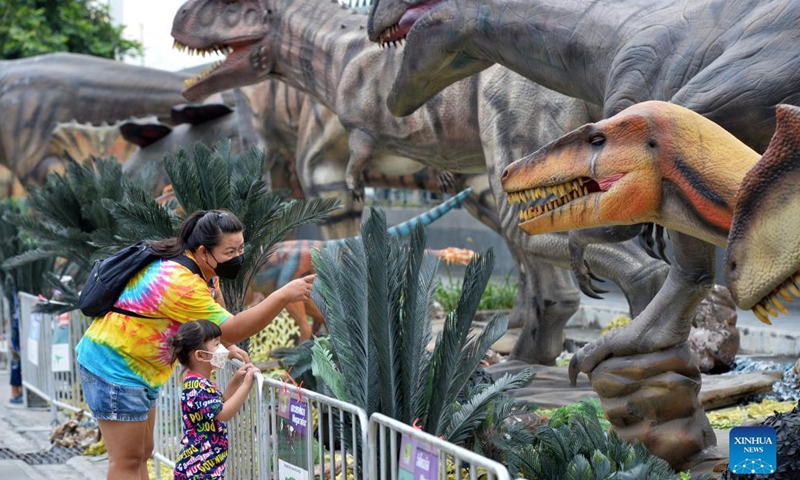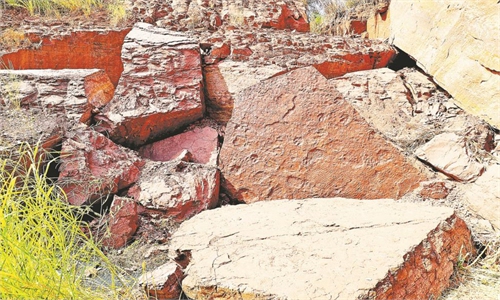Study changes views on extinction of ancient beasts

Tourists look at dinosaur models at the Dino Fest in Bangkok, Thailand, on Dec 2, 2021. The Dino Fest kicked off on Dec 2 and will last until Dec 12, showcasing more than 50 dinosaur models.Photo:Xinhua
The age of dinosaurs ended in cataclysm one spring day 66 million years ago when an asteroid 7.5 miles (12 kilometers) wide hit Mexico's Yucatan peninsula, triggering the extinction of those remarkable beasts and about three quarters of Earth's species.
But were the dinosaurs already on the way out, with diversification faltering and rates of evolution sputtering, as some scientists have proposed? The answer is a definite "no," according to a new study that modeled food chains and ecological habitats in North America, the part of the world best represented in the fossil record from that time.
The researchers looked at the 18 million years before the asteroid impact that ended the Cretaceous Period and the 4 million years afterward at the outset of the Paleogene Period, when mammals asserted their dominance following the demise of the dinosaurs - aside from their bird lineage.
Based on more than 1,600 fossils, the researchers reconstructed the food chains and habitat preferences of land and freshwater vertebrates. These included the likes of giant meat-eater T. rex, three-horned Triceratops, tank-like Ankylosaurus, crocs, turtles, frogs, fish and the various smallish mammals that lived under the feet of the dinosaurs.
Dinosaurs were entrenched in stable ecological niches for which they were well adapted, the researchers found.
"In other words, the dinosaurs were struck down in their prime," said ecologist Jorge García-Girón of the University of Oulu in Finland and University of León in Spain, lead author of the research published in the journal Science Advances. But mammals had begun laying the groundwork for their later ascent, diversifying their ecological niches and evolving more varied diets, behaviors and climate tolerances, García-Girón added. Dinosaurs continued to evolve and adapt during the twilight of their reign, with new species appearing and old ones disappearing, the study found. Some of the major plant-eaters like the horned and duckbilled dinosaurs were being replaced by a greater variety of medium-sized herbivores.
Some previous research has suggested that dinosaur biodiversity declined well before the asteroid impact, based on the fossil record of various dinosaur families.
"There has been this nagging thought that dinosaurs may have been on their way out anyway, in the midst of a long-term decline, when the asteroid put them out of their misery," said University of Edinburgh paleontologist and study co-author Steve Brusatte. The fact that the dinosaurs were so well adapted to their climate and environment may have been their undoing.

